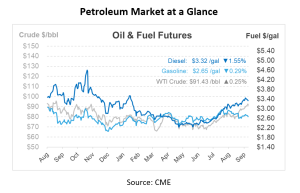
What is it – California Air Resources Board (CARB)
When it comes to air quality and climate change, California is a pioneer. At the heart of these initiatives is the California Air Resources Board, commonly known as CARB. As an authority on environmental protection, CARB plays a critical role not only within the state but also on the global stage.
What is CARB?
The California Air Resources Board shoulders the essential responsibility of shielding the public from the detrimental effects of air pollution. Additionally, they implement programs and strategies aimed at mitigating climate change. CARB’s mission embodies a balance between environmental preservation and economic consideration: their goal is to foster and defend public health, welfare, and ecological resources by effectively curtailing air pollutants, all while taking the economic implications into account.
CARB Partnerships
In the quest for cleaner air, CARB is not alone. The United States has established a three-tiered system for air pollution control with the US Environmental Protection Agency (EPA) at the forefront. The EPA sets nationwide air quality and emissions standards, supervising state efforts. The next tier is where CARB comes into play. CARB addresses California-specific air quality challenges, implementing even stricter standards than the EPA, especially concerning vehicles, fuels, and consumer products. Lastly, the Local Air Pollution Control Districts, comprised of 35 entities, control the emissions from static sources like refineries.
CARB’s Role and Responsibilities
CARB wears many hats. Their functions range from setting air quality standards and identifying high-risk pollutants to ensuring compliance from automakers and studying the cost and benefits of pollution controls. Their extensive air monitoring network helps track progress, and their Riverside-based Mary D. Nichols Laboratory stands as a beacon of emissions compliance verification. Moreover, they actively engage in researching the root causes of air pollution, potential solutions, and the science and technology that could address these issues. These benchmarks guide industries, local governments, and other stakeholders in their operations, ensuring that the collective emissions remain below levels that could jeopardize public health or the environment.
Targeted Initiatives
It’s no secret that certain communities suffer disproportionately from air pollution, particularly those nestled between transport hubs like freeways, ports, and rail yards. These areas witness a higher concentration of fine particulate matter, nitrogen oxides, and other hazardous pollutants, primarily from vehicular emissions, shipping activities, and goods transportation. Consequently, residents of these areas often report higher rates of respiratory diseases, allergies, and other pollution-related health issues. To address this, CARB has various programs under legislation like AB 617, focusing on these particularly affected areas. Industries in these areas are mandated to report their emissions more frequently and with greater detail. This not only aids in stricter oversight but also provides crucial data for air quality improvement strategies.
CARB’s Achievements and Impact
California’s rigorous air quality regulations, championed by CARB, have ushered in significant advancements. Modern vehicles emit 99% less pollution than their 1970s counterparts, dramatically reducing hospitalization and absenteeism rates from respiratory issues. CARB’s regulations have also catalyzed innovations, leading to game-changers like the catalytic converter and the proliferation of low and zero-emission vehicles.
CARB’s mandate expanded with the Global Warming Solutions Act of 2006, positioning it at the helm of major greenhouse gas reduction programs, including the famous cap-and-trade, Low Carbon Fuel Standard, and zero-emission vehicle programs. Their endeavors have put California on course to slash carbon emissions to 1990 levels by 2020, with even more ambitious targets set for 2030 and 2050.
The Path Ahead
Challenges persist for environmental protection across the US. Many Californians, especially in areas like Los Angeles and the San Joaquin Valley, are still exposed to the country’s worst air quality. Climate change, with its litany of droughts, wildfires, and rising sea levels, remains a looming threat.
California is the world’s fifth-largest economy, and decisions made by the organization often act as a precedent for other states or even at a federal level. When CARB establishes stringent standards, other states may choose to adopt similar standards or use California’s as a benchmark, leading to broader implications for the petroleum industry. CARB’s rigorous emissions and fuel standards have historically driven innovation in fuel technologies. The petroleum industry has had to invest in research and development to meet CARB’s mandates, which can lead to new, cleaner fuel technologies that are adopted nationally or even globally.
As we all work toward ensuring cleaner air and a more sustainable environment, Mansfield is here to be your trusted partner in the process. The road to sustainability is not a one-size-fits-all approach. With a broad range of solutions, including renewable diesel, biodiesel, ethanol, natural gas, and more, Mansfield can help you develop and execute a low-carbon fuel strategy that meets your needs and gets you to your destination.

This article is part of Daily Market News & Insights
Tagged:
MARKET CONDITION REPORT - DISCLAIMER
The information contained herein is derived from sources believed to be reliable; however, this information is not guaranteed as to its accuracy or completeness. Furthermore, no responsibility is assumed for use of this material and no express or implied warranties or guarantees are made. This material and any view or comment expressed herein are provided for informational purposes only and should not be construed in any way as an inducement or recommendation to buy or sell products, commodity futures or options contracts.





